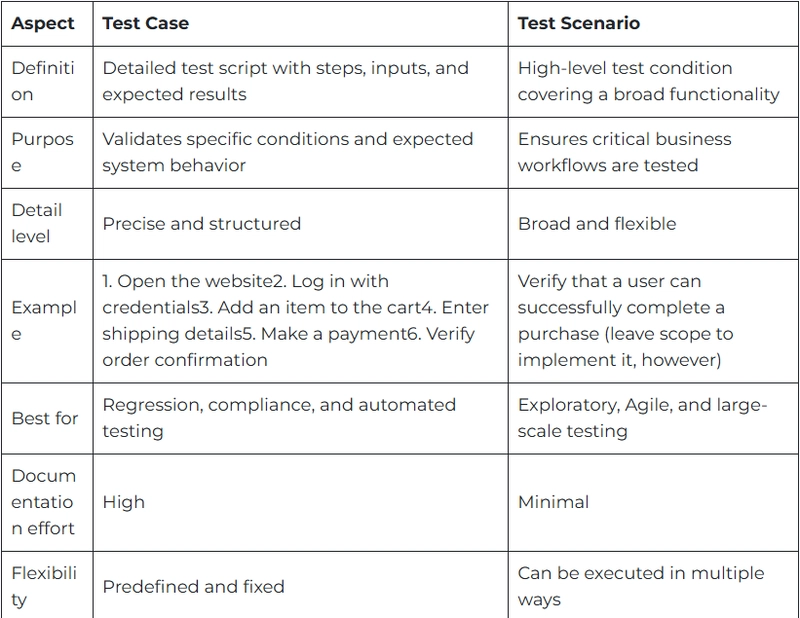How to Write Test Scenarios That Ensure App Success
As an experienced software tester, you’ll agree that you want to be as thorough as possible in your testing efforts to make your application a huge success. Yes, test cases are important but they don’t alone influence the outcome of how your app will be received. Especially when working on larger systems, time constraints and changing requirements make writing test cases for everything difficult. That’s where test scenarios come in—they provide a structured way to verify system functionality while keeping testing efforts optimal. In this blog post, we’ll explore test scenarios, when to use them (and when not to), and how to create them efficiently without getting lost in excessive detail. What is a Test Scenario? A test scenario is a brief, high-level description of a functionality or a specific user journey that needs validation. It outlines the exact conditions under which the test will be performed, focusing on what needs to be tested rather than how. You use it to cover key workflows and system behaviors. When To Create Test Scenarios Let’s say you’re testing an eCommerce platform. A test scenario might be: “Verify a user can successfully complete a checkout process with different payment methods.” This scenario gives you flexibility in execution. You might test it manually, automate it, or explore different edge cases within the same scenario without being tied to a predefined set of steps. Some other benefits of test scenarios include: They make it easier to discuss testing scope with developers, product managers, and stakeholders They help deal with complex apps, integrations, or situations where scripted test cases would be too rigid or time-consuming to maintain They adapt to changing requirements, meaning high-level scenarios remain relevant even when specific UI elements or processes change They’re a boon in Agile or DevOps environments, where rapid iterations and continuous changes make maintaining detailed test cases inefficient How to Write Test Scenarios Here’s how you can write a compelling test scenario: 1. Analyze requirements and identify key functionalities Before you do anything, you must first clearly understand the system requirements, including functional specifications and user stories. Speak to the stakeholders, analyze past defects, and review available documentation to determine what you want to test. For example, you’ll want to validate account creation, funds transfer, and loan application in a banking app. 2. List possible user workflows and system interactions Next, think about how your users interact with the app. What are the normal use cases, alternative paths, and error scenarios? List all the real-world variations in your test coverage. In an eCommerce storefront, some scenarios include: A registered user completing a purchase using a saved credit card A user attempting to complete a purchase with insufficient funds A new user checking out as a guest and paying via Apple Pay 3. Prioritize critical scenarios Not all test scenarios carry the same risk. You must prioritize them based on factors such as frequency of use, system criticality, and potential failure impact. For example, verifying patient data integrity and medication order accuracy in a healthcare app would take higher priority over testing a minor UI color change. Leverage risk-based techniques, such as Failure Mode and Effects Analysis (FMEA), to determine which scenarios to focus on. 4. Identify dependencies and pre-conditions Test scenarios often depend on preconditions such as system configurations, user roles, data dependencies, or external service availability. You need to spot these upfront so that you don’t encounter unexpected blockers during execution. Here’s a test scenario example: In a role-based access control (RBAC) system, a scenario for an “Admin User Managing User Accounts” requires an existing admin account with the necessary permissions. Similarly, an API-related test scenario may demand test data or a configured endpoint before execution. Write clear and concise descriptions Be as clear as you can be when writing test scenarios. Leave no room for ambiguity. For example, instead of writing: “Log in with Username and Password. Click on the Transfer Funds button. Enter the recipient’s details, specify an amount, and confirm the transaction.” Write: “Verify that a user can successfully transfer funds between two accounts.” The language makes the scenario adaptable to different testing approaches, including manual and automated test execution. 6. Validate and review test scenarios Before finalizing test scenarios, review them with stakeholders, including software developers, teasers, and product managers. This helps identify gaps, remove duplication, and ensure alignment with business objectives. Peer reviews and walkthroughs can improve overall test quality. Test Scenario Template Example Below is a structured framework for docum
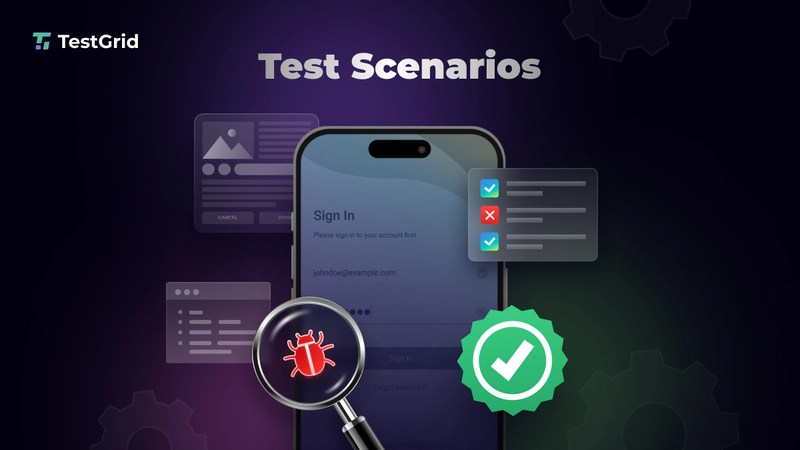
As an experienced software tester, you’ll agree that you want to be as thorough as possible in your testing efforts to make your application a huge success. Yes, test cases are important but they don’t alone influence the outcome of how your app will be received.
Especially when working on larger systems, time constraints and changing requirements make writing test cases for everything difficult. That’s where test scenarios come in—they provide a structured way to verify system functionality while keeping testing efforts optimal.
In this blog post, we’ll explore test scenarios, when to use them (and when not to), and how to create them efficiently without getting lost in excessive detail.
What is a Test Scenario?
A test scenario is a brief, high-level description of a functionality or a specific user journey that needs validation. It outlines the exact conditions under which the test will be performed, focusing on what needs to be tested rather than how. You use it to cover key workflows and system behaviors.
When To Create Test Scenarios
Let’s say you’re testing an eCommerce platform. A test scenario might be: “Verify a user can successfully complete a checkout process with different payment methods.”
This scenario gives you flexibility in execution. You might test it manually, automate it, or explore different edge cases within the same scenario without being tied to a predefined set of steps. Some other benefits of test scenarios include:
They make it easier to discuss testing scope with developers, product managers, and stakeholders
They help deal with complex apps, integrations, or situations where scripted test cases would be too rigid or time-consuming to maintain
They adapt to changing requirements, meaning high-level scenarios remain relevant even when specific UI elements or processes change
They’re a boon in Agile or DevOps environments, where rapid iterations and continuous changes make maintaining detailed test cases inefficient
How to Write Test Scenarios
Here’s how you can write a compelling test scenario:
1. Analyze requirements and identify key functionalities
Before you do anything, you must first clearly understand the system requirements, including functional specifications and user stories.
Speak to the stakeholders, analyze past defects, and review available documentation to determine what you want to test. For example, you’ll want to validate account creation, funds transfer, and loan application in a banking app.
2. List possible user workflows and system interactions
Next, think about how your users interact with the app. What are the normal use cases, alternative paths, and error scenarios? List all the real-world variations in your test coverage. In an eCommerce storefront, some scenarios include:
- A registered user completing a purchase using a saved credit card
- A user attempting to complete a purchase with insufficient funds
- A new user checking out as a guest and paying via Apple Pay
3. Prioritize critical scenarios
Not all test scenarios carry the same risk. You must prioritize them based on factors such as frequency of use, system criticality, and potential failure impact.
For example, verifying patient data integrity and medication order accuracy in a healthcare app would take higher priority over testing a minor UI color change. Leverage risk-based techniques, such as Failure Mode and Effects Analysis (FMEA), to determine which scenarios to focus on.
4. Identify dependencies and pre-conditions
Test scenarios often depend on preconditions such as system configurations, user roles, data dependencies, or external service availability. You need to spot these upfront so that you don’t encounter unexpected blockers during execution.
Here’s a test scenario example:
In a role-based access control (RBAC) system, a scenario for an “Admin User Managing User Accounts” requires an existing admin account with the necessary permissions. Similarly, an API-related test scenario may demand test data or a configured endpoint before execution.
- Write clear and concise descriptions Be as clear as you can be when writing test scenarios. Leave no room for ambiguity.
For example, instead of writing:
“Log in with Username and Password. Click on the Transfer Funds button. Enter the recipient’s details, specify an amount, and confirm the transaction.”
Write:
“Verify that a user can successfully transfer funds between two accounts.”
The language makes the scenario adaptable to different testing approaches, including manual and automated test execution.
6. Validate and review test scenarios
Before finalizing test scenarios, review them with stakeholders, including software developers, teasers, and product managers. This helps identify gaps, remove duplication, and ensure alignment with business objectives. Peer reviews and walkthroughs can improve overall test quality.
Test Scenario Template Example
Below is a structured framework for documenting your test scenarios. It makes it easier to track, maintain, and execute scenarios.
The Test Scenario vs Test Case Comparison
So, can test scenarios and test cases be used interchangeably? No, both terms are different and have their role to play in software testing. Let’s take a look at how:
It defines what to test without specifying execution steps. It’s effective for exploratory testing, where rigid steps could limit issue discovery.
On the other hand, a test case contains step-by-step instructions for executing a test. It also spells out input data and expected results. It’s perfect for conducting regression testing where steps must be followed to the ‘t.’
Despite the advantages, test scenarios aren’t always the right approach. Sometimes, test cases make more sense, especially if:
- Verifying complicated or tedious calculations or rules; for example, network-related scenarios demand greater control on configurations, protocols, or large-scale computations
- You’re working in finance, healthcare, telecom, or a similar industry requiring strict compliance; auditors may expect test cases with traceability
- Your testers lack domain knowledge; detailed test cases prevent misinterpretation
Suppose you’re testing a tax calculation system that determines income tax based on multiple parameters, such as salary slabs, deductions, exemptions, and tax laws.
A small error in logic can lead to incorrect tax calculations. A test scenario like “Verify that the tax calculation system applies the correct tax rates based on income slabs” won’t be enough in this situation. You’ll need to go deep and write a test case like:
- Verify that a person earning $50,000 with a $5,000 deduction is taxed at the correct rate of X%
- Check that individuals in the highest tax bracket receive no deductions beyond the legal limit
In summary, creating a test case and test scenario is vital to ensuring efficient test coverage.
Test Case vs Test Scenario: A Tabular Comparison
Roadblocks to Look Out for When Writing Test Scenarios
- There are always unique and unexpected challenges that can make things tricky here, including:
- AI and automated decision-making systems need to be tested for bias, fairness, and unintended consequences; test scenarios might not always consider the ethical implications of software behavior
- Complex systems require testers to juggle multiple dependencies, integrations, and edge cases mentally; burnout and tunnel vision can result in missed scenarios
- Even well-planned test scenarios often miss edge-case vulnerabilities like API abuse, privilege escalation, or social engineering; the key is to think outside the box
- Intermittent test failures due to environment instability, network latency, or external service issues can obscure real defects
Best Practices to Create Test Scenarios
Here’s how to refine and optimize your test scenarios to avoid common issues and ensure maximum effectiveness.
1. Keep scenarios modular and independent
Each scenario should focus on a single functionality or workflow without depending on the results of another scenario. Otherwise, you’ll have to deal with execution issues when one test failure impacts others. Also, write test scenarios so they can be executed in any order—vital for parallel and automation testing.
2. Align test scenarios with real-world user behavior
It should mimic actual user workflows rather than just validating isolated functionalities. This ensures the app is tested as it will be used in real life.
Let’s consider a test scenario example:
A loan application process where a user starts an application on mobile, gets interrupted, and later completes it on a desktop. This scenario should test multi-device continuity, session persistence, and real-world interruptions.
Steps include:
- Start application on mobile, fill in details, but exit mid-way
- Resume on desktop, upload documents and submit
- The system verifies credit scores and eligibility
- The user gets conditional approval and uploads extra documents via an email link
- The loan is approved, and funds are disbursed
3. Include coverage of edge cases and negative testing scenarios
Many teams focus only on the expected user behavior and miss out on failure scenarios. You need to verify that a user can reset their password using a valid email. But what happens when a non-existent email is used to reset the password? Can your system flag that?
4. Make scenarios reusable across test phases
A well-written test scenario can be executed in different test cycles, including smoke, functional, regression, and performance testing. To remain reusable, avoid making them too environment-specific.
For instance, verifying a user can complete a purchase using a MasterCard on the staging server is too specific a scenario. Can you apply it elsewhere? No.
5. Don’t get into excessive details
Test scenarios aren’t test cases. Keep them simple and high-level so they can easily adapt to detailed test cases. Focus on what to test, not every tiny step.
6. Keep refreshing your test scenarios
As applications evolve, so should your test scenarios. They must reflect new features, updates, and deprecations to ensure testing stays aligned with the latest system behavior. Regular reviews help maintain relevance and effectiveness.
Conclusion
In conclusion, test scenarios are a crucial part of efficient software testing, especially when dealing with complex systems and rapidly changing requirements. They offer a high-level approach to validate critical functionalities and user workflows without getting bogged down in excessive detail. By focusing on what needs to be tested, test scenarios allow for greater flexibility and adaptability, making them ideal for Agile, DevOps, and exploratory testing. However, they should be balanced with test cases when precise, detailed validation is required. To create effective test scenarios, prioritize critical workflows, keep them modular and aligned with real-world user behavior, and ensure they remain adaptable as the application evolves.
Source: This blog was originally published at TestGrid
.jpg?#)

























































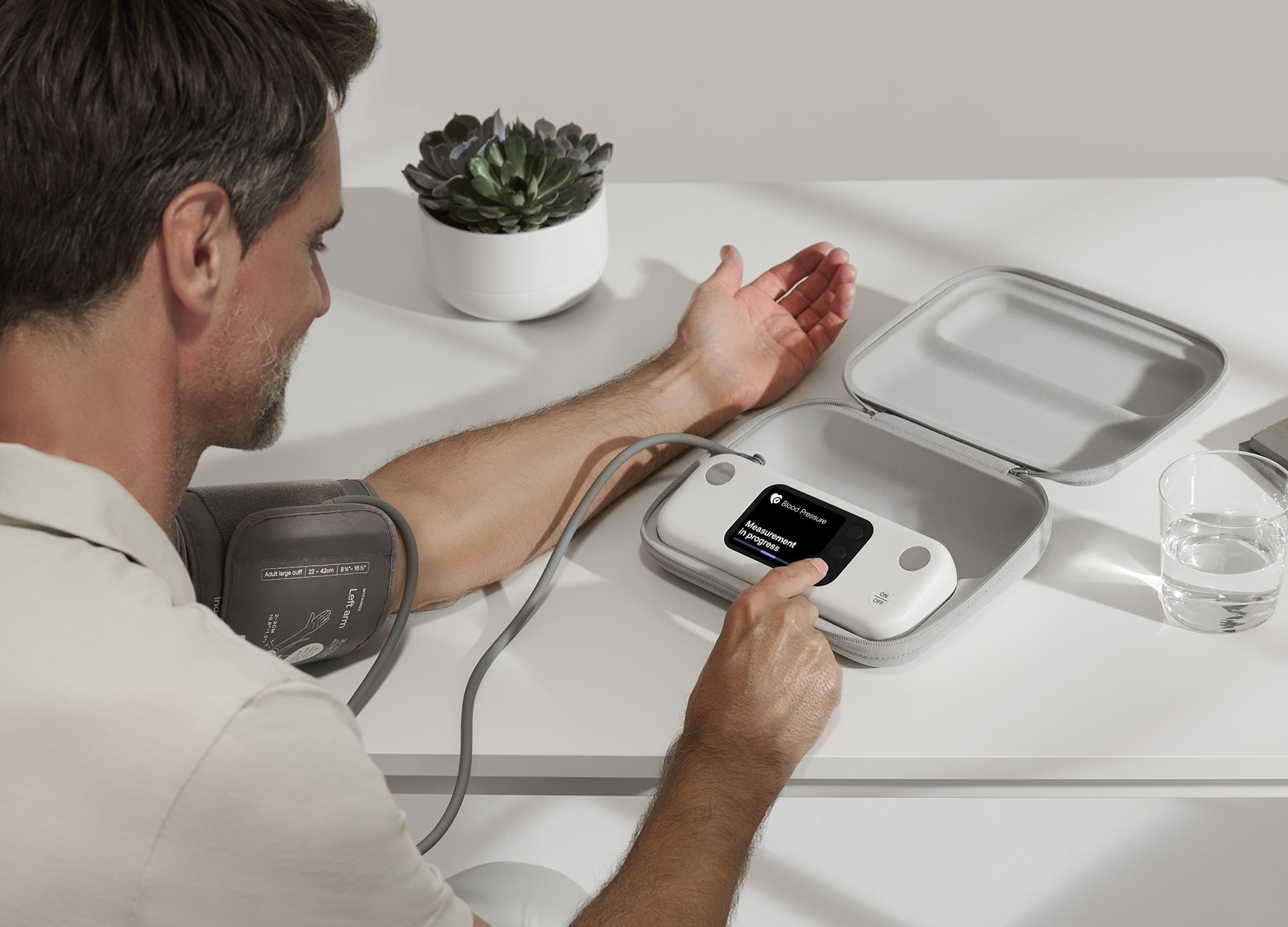










![Apple Releases macOS Sequoia 15.5 Beta to Developers [Download]](https://www.iclarified.com/images/news/96915/96915/96915-640.jpg)
![Amazon Makes Last-Minute Bid for TikTok [Report]](https://www.iclarified.com/images/news/96917/96917/96917-640.jpg)
![Apple Releases iOS 18.5 Beta and iPadOS 18.5 Beta [Download]](https://www.iclarified.com/images/news/96907/96907/96907-640.jpg)
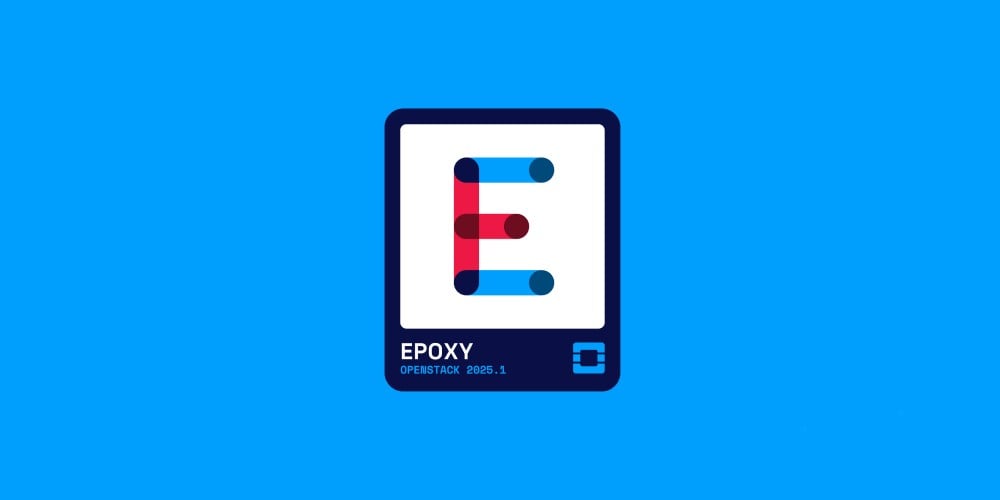



















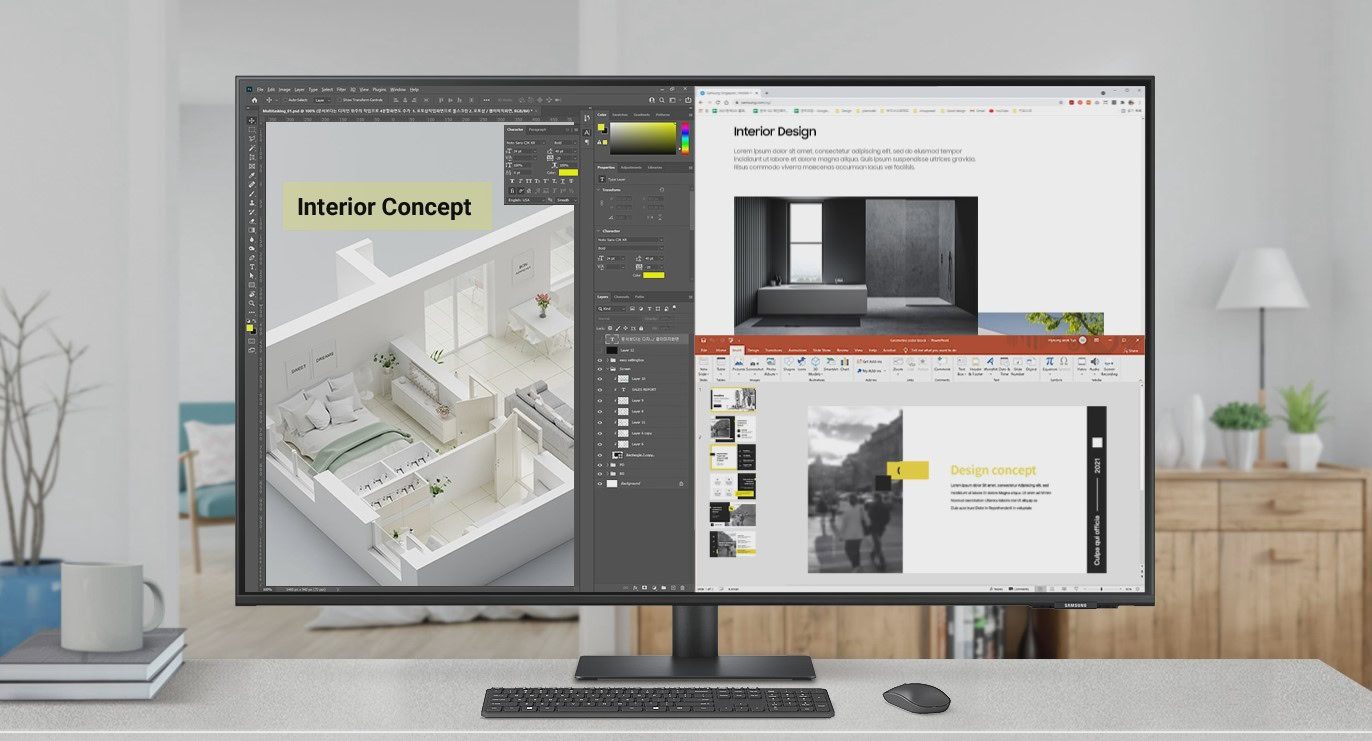
































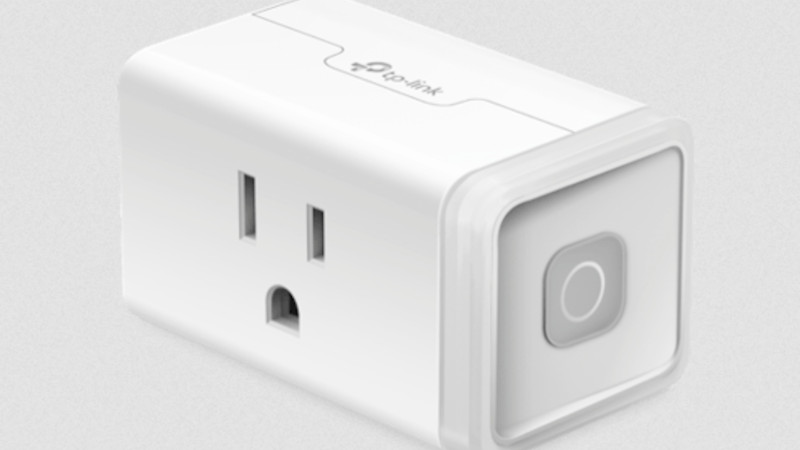

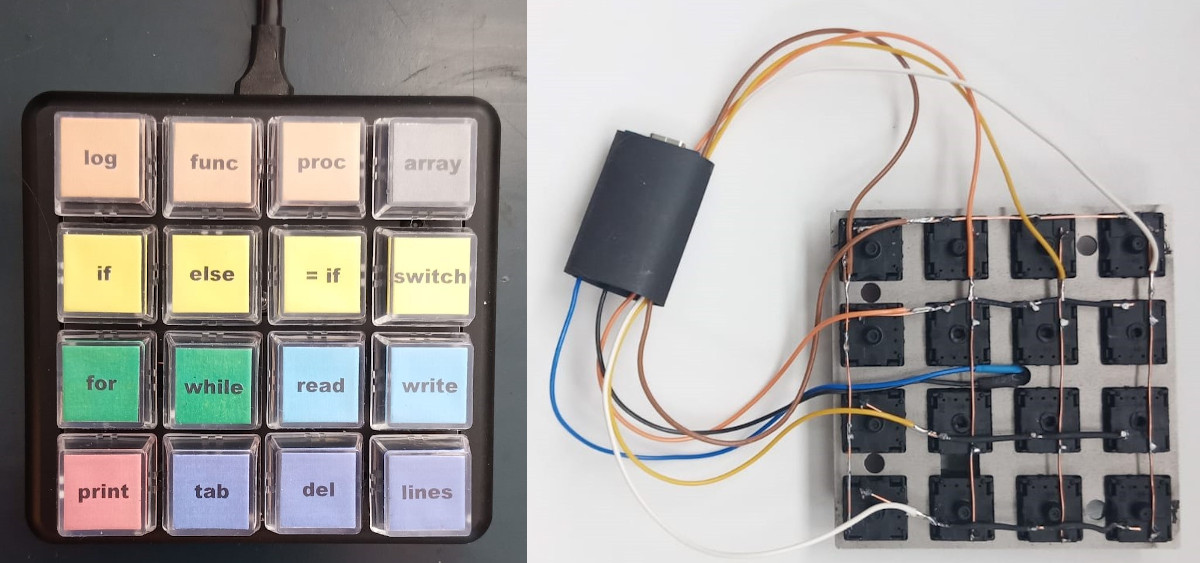
































































































































![[The AI Show Episode 142]: ChatGPT’s New Image Generator, Studio Ghibli Craze and Backlash, Gemini 2.5, OpenAI Academy, 4o Updates, Vibe Marketing & xAI Acquires X](https://www.marketingaiinstitute.com/hubfs/ep%20142%20cover.png)


























































































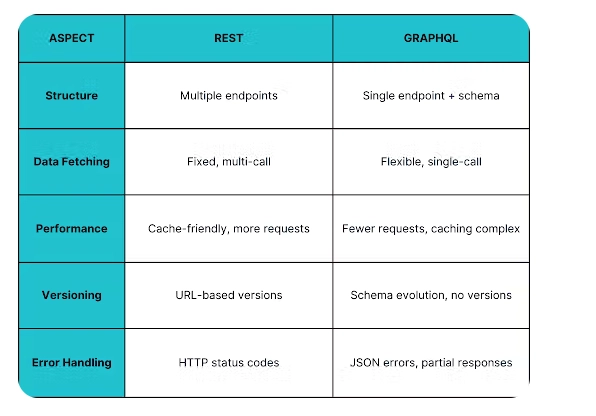




















![Is this a suitable approach to architect a flutter app? [closed]](https://i.sstatic.net/4hMHGb1L.png)










































































































